South Korea Winter Bird Photography Tour
 17th January-29th January 2025: South Korea winter bird photography tour highlights include Steller’s Sea Eagle, Varied Tit, Solitary Snipe, Red-crowned Crane, Japanese Pygmy Woodpecker, Harlequin Duck, Saunders’s Gull, Yellow-throated Bunting, White-naped Crane, Cinereous Vulture, Baikal Teal, Dusky Thrush, Hooded Crane, Swan Goose, Japanese Wagtail, Ancient Murrelet, Siberian Accentor, huge flocks of wildfowl & gulls at close range. – £3975 per person.
17th January-29th January 2025: South Korea winter bird photography tour highlights include Steller’s Sea Eagle, Varied Tit, Solitary Snipe, Red-crowned Crane, Japanese Pygmy Woodpecker, Harlequin Duck, Saunders’s Gull, Yellow-throated Bunting, White-naped Crane, Cinereous Vulture, Baikal Teal, Dusky Thrush, Hooded Crane, Swan Goose, Japanese Wagtail, Ancient Murrelet, Siberian Accentor, huge flocks of wildfowl & gulls at close range. – £3975 per person.
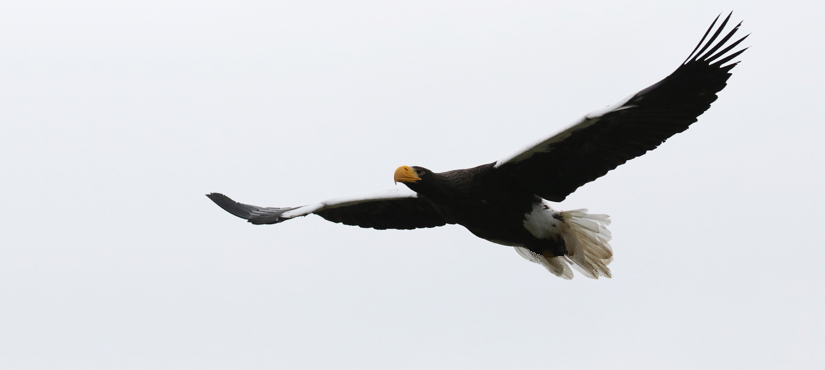
Trip Details
- Dates: 17th – 29th Jan 2025
- Cost: £3775
- Single Supplement: Not applicable
- Deposit: £520
- Tour length: 13 Days (11 days birding)
- Min/Max group size: 4 / 8
- Start/Finish: Seoul
- Tour Type: Photography
- Photo Opps: Excellent
- Physical Classification: Easy
- Leaders: Nick Upton & Dr Nial Moores
If you have any questions about this trip please feel free to ask by contacting us at info@calidrisbirdingtours.com
South Korea Winter Bird Photography
With snowy peaks as a backdrop the farmland, pine woodland, estuaries, rivers and lakes of South Korea are places where birds winter in impressive numbers even though human development is never far away. With large flocks of cranes feeding in rice stubble, woodlands full of woodpeckers, tits and buntings, rivers and lakes teeming with wildfowl, rafts of alcids, divers and grebes on the sea and large numbers of raptors South Korea delivers the abundance and proximity to birds that photographers desire. Visiting Sputh Korea may never have occurred to you before but this small country offers some of the best and most accessible winter birding in East Asia.
The Republic of Korea (South Korea) is at the southern tip of the Korean peninsula, separated from China by North Korea and from Japan by the East Sea. Only a few birders visit this country, usually overlooking it for trips to nearby Japan and China. However, because of its small size and well-developed infrastructure the whole of the mainland of South Korea can be visited quickly, easily and relatively cheaply in order to see and photograph an excellent range of wintering birds. Well-organized and safe, there is no history of bird persecution in South Korea meaning that birds occur in good numbers at almost any location and are often quite approachable. Although a winter birding trip to South Korea will not provide a huge bird list, what you do get is quality and lots of photographic opportunities by seeing many species well again and again.
If you enjoy seeing large numbers of birds then South Korea in winter is a great destination and these numbers mean that photo opportunities are abundant. This tour is also a great opportunity to learn about the birds you are photographing, and the conservation issues that surrounding them, with our extremely knowledgeable guides. This is a tour for those who want to enjoy the best photographic opportunities of common species as well as targeting key east Asian wintering species such as Red-crowned Crane, Solitary Snipe, Saunders’s Gull, Hooded Crane, Steller’s Sea Eagle, Baikal Teal and White-naped Crane. Our experiences with huge numbers of gulls, cranes and wildfowl as well an abundance of woodland species will be memorable. From the magnificent Steller’s Sea Eagle to the colourful Varied Tit this is a photography tour that is strong in variety, rarity and bird abundance.
Day 1, Arrival in South Korea – 17th January 2025
You will meet your guides at Incheon International airport and then drive a short distance to a nearby comfortable hotel. At dinner there will be a pre-trip briefing to explain how the best photographic opportunities are likely to be found on day one and how the tour will proceed.
Day 2, National Arboretum – Jeongok – 18th January 2025
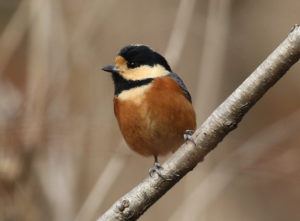
We will leave our hotel early in order to arrive at the national arboretum as the soft morning light is starting to reach the right levels for photos. There are some really good birds here and the air clarity is usually excellent too meaning that getting top quality photographs of the superb Varied Tit is normally one of the highlights here. Marsh Tit and Eastern Great Tit are usually very abundant here too and although we will see them plenty of times on this tour this might just be the best place to get the really sharpest of shots.
Brown-cheeked Bulbul is a common bird in South Korea but when they are feeding on berry bushes in the arboretum it can make for really superb images, allowing the capture of the fine details of this surprisingly attractive bird. It is always true that even the most common of birds can make a good photo in the right situation. Other common species that we will get our first chances with here include the colourful Daurian Redstart, Vinous-throated Parrotbill, Rustic Bunting and Yellow-throated Bunting.
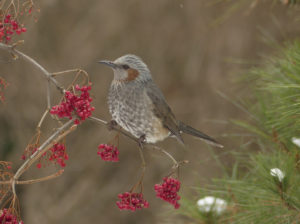
One of the birds to try and get good shots of here is the cute little Japanese Pygmy Woodpecker which can usually be seen well. If we don’t get it here then not to worry, there will be plenty more opportunities. We will also make an effort to locate Grey-capped Pygmy Woodpecker and White-backed Woodpecker but it is harder to say if we can a good opportunity to photograph them at this location. We might even get lucky with Black Woodpecker too!
A bird which we have a realistic chance of seeing at this site only is Solitary Snipe, a nicely-marked bird that winters in the small stream. Sometimes we get close to it and other times it is viewed a bit further away along the stream. This bird may well require a converter on your lenses to get the very best shots of it, on the other hand it may be right in front of us; be prepared.
Spending time here will present lots of nice opportunities for photography. We may get our first Dusky Thrushes here or Bull-headed Shrike. Species such as Eurasian Nuthatch, Goldcrest, Brambling, Hawfinch and Long-tailed Tit are all present and almost all of these are different subspecies than the ones from Europe so present interesting photographic subjects for comparing the small plumage differences.
After we have finished here it is a little over an hour to our accommodation in the town of Jeongok.
Day 3, Cheorwon Plains – 19th January 2025

Today is going to be a photographer’s dream. We plan to arrive early at White Horse Hill, a war memorial, close to the border with North Korea. Standing on this little hillock gains us a fantastic view over the farmland and allows us to spot cranes as they emerge from the demilitarized zone where they roost. At first the light conditions will be a little low but as the numbers of White-naped Cranes and Red-crowned Cranes build up and they get closer and closer on their flight path the light will become far better and getting lots of flight shots of both of these species will be exciting. It is hard to describe what an amazing spectacle this is, with an amazing backdrop too, one of those wonderful experiences with wildlife that we all travel for.
Once the flight of the cranes is over then we can concentrate on getting photographs of them on the ground. There are lots of opportunities throughout the morning for this by using the car as a hide. However, such is the cold that heat haze builds up around the car so it is worth remembering to get the lens well out of the window to avoid this. We can take a walk around too and will get more opportunities to photograph the cranes flying but our attention will also be drawn to groups of Greater White-fronted Geese that fly past presenting themselves for fantastic photos.
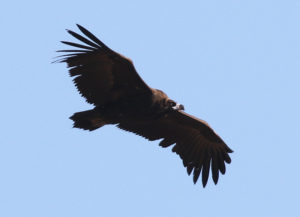
One bird that we will try to find here is Chinese Grey Shrike. This is not an easy species to find on this itinerary but this represents our first real chance. It would be nice to photograph this distinctive bird. We will certainly get plenty of chances to photograph Rustic Buntings, Grey-capped Greenfinches, Yellow-throated Buntings, Long-tailed Tits, bramblings and Hawfinches here and don’t forget to get at least a few images of the commonest of birds such as Oriental Turtle Dove.
Raptors are a feature here. We are sure to see our first White-tailed Eagles soaring here and there is a spot where hundreds of Cinereous Vultures usually congregate and we can have fun getting all sorts of interesting shots of these massive beasts as they feed, loaf around in fields and struggle to become airborne in the cold winter air.
We are also likely to get our first encounters with wildfowl but most settled birds will be too far away for photography although flypast Tundra Bean Geese, Eastern Spotbilled Duck, Northern Pintail and perhaps even Baikal Teal will probably come close at times. The rough patches in the farmland will hold buntings, perhaps including Meadow Bunting and we have found Long-tailed Rosefinch here too. The list of possibilities is endless so make sure you have plenty of spare batteries and memory cards today.
Day 4, Paldang – 20th January 2025
The previous day will have been wonderful but we could be in for something to eclipse that today. The Han river at Paldang is an hour or so from our hotel so we will leave early to make sure we are there in time for our main target. This area creates a bizarre background of snow-capped forest hills behind high-rise buildings around a large river with riverine vegetation and frozen water providing a habitat for lots of birds. We will prioritize one species today – Steller’s Sea Eagle. A few of these magnificent birds regularly winter here and we want to be in place when they arrive from their roost site. Our primary aim is to get the best photographs of this bird that we can and this may mean relocating quickly along the river depending on where we find our Steller’s Sea Eagle.
Of course there is more to see here. Scaly-sided Merganser is another rare species that we have a good chance of finding here but to get good photographs will require some luck and as much magnification as you can get. A converter is a good piece of equipment to add to your set up for this bird.

It should be much easier to get good shots of non-feral Mandarin Duck here though with a group regularly wintering and feeding close to the banks of the river. Other wildfowl will include Common Teal, Goosander, Eurasian Wigeon, Smew and many others but there will probably be better chances to get close to these birds.
Along the banks of the river rough vegetation holds a lot of birds giving us chances to get close to Yellow-throated Buntings as they feed on fallen seeds, Daurian Redstart, Brown-cheeked Bulbul, Oriental Turtle Dove as well as flocks of Vinous-breasted Parrotbills and Eastern Great Tits. This location is also fairly reliable for Siberian Accentor so we will make an effort to photograph this smart little bird here too. Bull-headed Shrike, Long-tailed Rosefinch and Meadow Bunting all winter here in small numbers too so hopefully we will get lucky.
Many of the commoner water birds will be seen here so we will not neglect these either, sometimes the commonest of birds can result in the best of images.
Day 5, Namhansanseong – Yangyang – Daejin – 21st January 2025
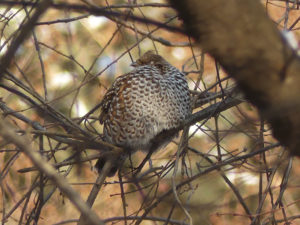
It is not a long journey to the forested hills at Namhansanseong. This pleasant area is a nice place to walk around and look for woodland birds. We are going to be fairly single-minded at this site, spending our time looking for Hazel Grouse in a regular area. Although this is not an easy bird to find we have a great chance and it is often possible to obtain some good shots of this shy bird here.
As we walk through the woods in search of our main target there will be a good helping of other woodland birds, many of which we will see right in the car park. There should be more opportunities to photograph the beautiful Varied Tit as well as Marsh Tit, Japanese Pygmy Woodpecker and perhaps Azure-winged Magpies too. Species such as Eurasian Nuthatch, Eurasian Jay, Grey-headed Woodpecker, Brambling and Naumann’s Thrush are all likely. The clear air and beautiful setting usually make for good images here. Although we will have some time to photograph the birds that present themselves to us we plan to leave soon after finding Hazel Grouse so that we can cover a lot of ground.
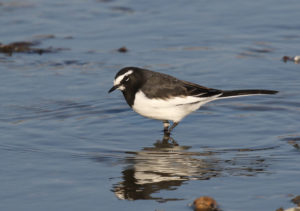
We plan to drive across country to the town of Yangyang where the river has some areas where we can get close to birds feeding in the shallows. In the past this has proven to be a great place to get close to Japanese Wagtail and Buff-bellied Pipit. There can also be good numbers of White Wagtail and the three different races that could be present can make for interesting images. Northern Lapwing, Common Snipe might both allow close inspection and here we have another chance to find the scarce Chinese Grey Shrike or perhaps Long-billed Plover.
In the late afternoon we will begin our journey up the coast to our accommodation at Daejin but we will make one last stop somewhere on a beach or bay to take advantage of our first opportunity to photograph gulls such as Black-tailed Gull, Vega Gull, Slaty-backed Gull or perhaps a Glaucous-winged Gull if we are lucky. We will stop somewhere along the way for dinner and reach our accommodation after dark.
Days 6-7, Northeast Coast – 22nd-23rd January 2025

On the first of these two days we intend to spend the morning birding in the bays and harbours close to our accommodation. Rocks right outside usually host a Glaucous-winged Gull or two as well as groups of Pelagic Cormorant drying their wings. Great Cormorants will be with them and it will test our identification skills to pick out Temminck’s Cormorant too. Many of the birds in the bay will be too far away for photography but we will spend our time concentrating on the birds that do come close enough. Often we can get within range of small parties of Black Scoter and maybe even Stejneger’s Scoter too.
In the harbours there will be lots of Black-tailed Gulls as well as Vega Gulls and Slaty-backed Gulls for us to play around with and try to capture while they are doing something interesting. This is always a good opportunity for nice flight shots or close up head shots. The rocks around these harbours sometimes have Blue Rockthrush posing upon them; these smart birds always make a nice photograph.

Around lunch time the plan is to take a fishing boat out into the bay. This will present some good photo opportunities of many species including rafts of cute Ancient Murrelets and probably at least a few Rhinoceros Auklets close to the boat. There can be large numbers of birds out here including Red-necked Grebe, Pacific Diver, Red-throated Diver and rarer alcids should include Spectacled Guillemot, Long-billed Murrelet and Brunnich’s Guillemot. It will be challenging to get close enough to all of these to photograph but there is always a good success rate with getting close to a good variety of the birds.
The boat should get us closer views of Stejneger’s Scoter and Black Scoter along with Red-breasted Merganser and lots of gulls in flight.
After the boat trip and a warm coffee we can visit a nearby beach where congregations of gulls can be spectacular. This is a superb opportunity to get really top quality images of many species as they feed on fish eggs and squabble among themselves. Mongolian Gull in first winter plumage always makes a lovely photograph and there will be Glaucous Gull, Common Gull, Vega Gull, Hueglin’s (taimyrensis) Gull, Black-tailed Gull, Slaty-backed Gull and possibly American Herring Gull and Steppe Gull too. The sheer numbers of birds can be amazing.
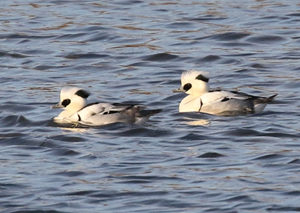
On our second day we plan to begin traveling down the coast, visiting more bays and harbours, particularly for a spot where we can usually get close to stunning Harlequin Ducks. There could also be Sanderling running around at the water’s edge and we might be able to find a colourful Blue Rockthrush on a harbour wall too. More gulls are sure to present themselves for some nice flight shots here.
If we have time we can also visit Seoraksan National Park to chase some more woodland birds again. This can be a good place to get close to White-backed Woodpecker as well as flocks of Marsh Tit, Long-tailed Tit, Eastern Great Tit, Brambling and Dusky Thrush.
Timing things right we will reach the town of Gunsan in the afternoon to give us time on a river where we can devote time to getting as close as possible to Long-billed Plover and there are likely to be some stunning male Smew posing for us somewhere here. Here we can get quite close to some wildfowl including Whooper Swan, Goosander and perhaps Falcated Duck and in the late afternoon light even mundane species such as Great Egret present good photographic subjects.
Day 8, Gunsan – Tabaeksan – Busan – 24th January 2025
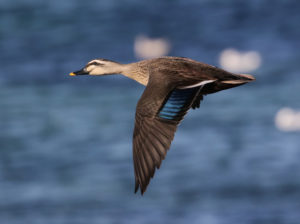
Just around the corner from our hotel is a large park with a small nature reserve attached to it and a lake. Here we will get our closest encounters with many species of widespread wildfowl and it is a great opportunity for photos. Species such as Goosander, Northern Pintail, Smew, Goldeneye and Eastern Spotbilled Duck should be very close while out on the lake should be Greater Scaup and Black-necked Grebe among others.
Walking around the nature reserve area gives us another chance of a number of birds we will have already seen, but it is always good to have plenty of chances to photograph them. Species such as Dusky Thrush, Brambling, Olive-backed Pipit, Marsh Tit, Yellow-throated Bunting, Rustic Bunting and Bull-headed Shrike should be easy to find. A walk along a nearby stream provides another chance to locate Japanese Wagtail and the reeds can hold various buntings or other migrants.
After an hour or so here we can go back to where we finished the previous day and perhaps get some better shots of Long-billed Plover if not achieved before and Red-billed Starlings can be found in roadside trees. Oriental Greenfinch, Smew, Bull-headed Shrike and perhaps even Oriental Stork are all good photographic subjects too.
By mid/late morning we will make a drive of a few hours to some hills near the town of Tabaek. The road climbs through pine forest where we may have a chance of seeing Pallas’s Rosefinch or Bullfinch but we really aim to get to the cabbage fields to look for Asian Rosy Finch. A network of roads goes through the fields and by driving slowly we can usually locate the finches and get reasonably close to them. Photographing them is a challenge but certainly not an impossible task. We may have another chance at Siberian Accentor or some other common woodland birds but after the Rosy Finches we will begin a fairly long drive towards Busan.
Day 9, Nakdong Estuary – Junam – 25th January 2025

Once again we have chosen a hotel very close to our first birding site, the promenade at Busan waterfront. Here many of the birds will be quite distant but we are here for one special bird; Relict Gull. Small numbers of this rare bird winter in the estuary and we can usually find them feeding on the water’s edge on islands within the estuary. Quite frankly it will not be easy getting a good photo of this species but with a converter on and a bit of luck on our side we have a fighting chance of getting birds-in-habitat shots. Although there are a lot of birds here, such as Oystercatcher, Eastern Marsh Harrier, Saunders’s Gull and even Steller’s Sea Eagle, most will be too far away for good photos. With this in mind we will move on to a far better site for photographers.
An hour’s drive will get us to Junam reservoir where there are always a lot of chances for obtaining good images. The stubble fields will contain Tundra and Taiga Bean Geese as well as flocks of White-naped Cranes. All of these usually present themselves for flight shots and it is likely that we can get very close to the geese.

Raptors here can include Hen Harrier, Eastern Buzzard and Cinereous Vulture but one of the best features is the feeding area for wildfowl. Supplementary food is provided for the large numbers of wildfowl wintering here and this is the best chance for getting close to Baikal Teal. There are usually small numbers of this colourful duck alongside Whooper Swans, Northern Pintail, Swan Goose, Greater White-fronted Goose and many other species. Standing behind a row of bushes many of these birds will come quite close to us while small groups fly in and out constantly.
On the lake itself we may be lucky enough to get Oriental Stork and Eurasian Spoonbill is usually a nice subject to photograph here too. White-tailed Eagles sit on the ice while around the lake we can take a walk which is often good for Hawfinch, Grey-headed Woodpecker, Dusky Thrush, Eurasian Hoopoe and Vinous-throated Parrotbill. Large numbers of birds will be both on the lake and in the vegetation around it too giving us lots of options. This is a really good site and should provide lots of close encounters with many species including White-cheeked Starlings.
It is only around an hour back to our hotel, close to which we can enjoy a hot dinner and visit a Korean pub for those so inclined to do so.
Day 10, Busan – Suncheon – 26th January 2025
This morning we can check out a different side of the Nakdong estuary where species such as Falcated Duck, Saunders’s Gull and Eurasian Oystercatcher sometimes come close to the shore. We will be birding from a small park where Yellow-bellied Tit is often found and species such as Olive-backed Pipit, Japanese Tit and Coal Tit might be photographed too. We will spend an hour or so here, just to see what photographic opportunities arise before taking a walk in a small woodland reserve. This is a good location for Japanese White-eye and is probably our best chance of finding Pale Thrush which is quite shy but can usually be photographed. If the weather has been really cold, lots of small birds can collect here and we might get lucky with Japanese Bush Warbler or Grey Bunting although both species are rare.
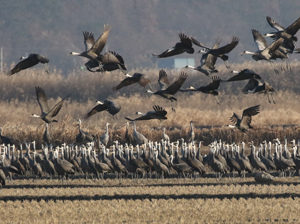
After a short morning here we will travel a few hours to Suncheon Bay where reed beds hold Chinese Penduline Tits, along with more Rustic Buntings and Yellow-throated Buntings. Pallas’s Reed Bunting and Common Reed Bunting can be found too but the main attraction here is a large flock of Hooded Cranes which regularly spend the winter here. There are usually lots of birds on the ground but also many coming in to land giving chances for flight shots as well as photos of flocks feeding. The main focus will be on getting good photos of the Hooded Cranes but we will also check for small numbers of Common and Sandhill Cranes that often join the group.
In the rice stubble there are usually Buff-bellied Pipits for us to find and Bull-headed Shrike often poses for photos. Tundra Bean Geese and Greater White-fronted Geese often feed alongside the cranes here and the afternoon light will hopefully give us some nice flight shots as they come in and out of their feeding areas.
While standing around, photographing the cranes, we should be vigilant for raptors with Eastern Buzzard, Peregrine or even Upland Buzzard perhaps presenting themselves overhead. After getting the best shots we can of the cranes we will move on to our accommodation at the town of Gunsan, a drive of a few hours.
Day 11, Guem Estuary – 27th January 2025
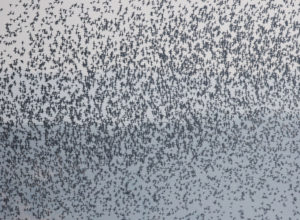
In and around the city of Gunsan and the Guem Estuary there are a lot of birding spots for us to check out over the course of the day. Depending on the tide we can visit a small harbour where we may be able to get very close to Saunders’s Gull or even Relict Gull. Here there are often more chances to photograph species such as Varied Tit, Japanese Pygmy Woodpecker, Marsh Tit and Yellow-throated Bunting. Trees in this area sometimes hold Chinese Grosbeak, Light-vented Bulbul or Azure-winged Magpie and the mud flats should present us with some shorebirds such as Common Greenshank, Eurasian Curlew and Grey Plover.
If we have not already seen them then this region is another chance to find Swan Goose but one of the big targets today will be to find one of the large flocks of Baikal Teal that frequently form in this area in mid-winter. The spectacle that these birds create is a memorable one and if the flock takes flight it makes an incredible photo opportunity. We might need the help of a White-tailed Eagle to put the ducks into flight!
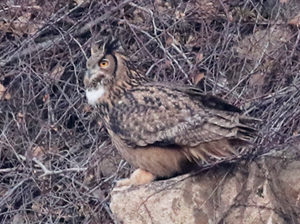
Some of the fields close to Gunsan can hold enormous numbers of (Eastern) Rook, which are quite a sight as they sit on roadside power cables. Searching these flocks usually results in finding a few Daurian Jackdaws too, handsome in their black and white plumage. If we want better photos of woodpeckers then we can check a park in Gunsan where Grey-headed Woodpecker, Japanese Pygmy Woodpecker and White-backed Woodpecker are often approachable. This location can be another good place to look for Chinese Grosbeak too or other wintering species such as Dusky Thrush, Hawfinch, Pallas’s Rosefinch or Naumann’s Thrush.
In many places there will be flocks of geese to photograph and check for rare Lesser White-fronted Geese while we will check reed beds close to the river for Chinese Penduline Tit. Buntings can be tough to photograph so the reeds here should also give us more chances with Black-faced Bunting, Rustic Bunting or even Meadow Bunting. At the end of the day we can try for Eurasian Eagle Owl at a quarry close to town where we might be able to lure this magnificent bird in, onto a nearby cliff. This would be a nice end to the day before dinner in a nice, warm restaurant.
Day 12, Guem Estuary – Seosan – Incheon Airport – 28th January 2025
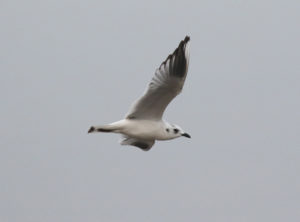
Our last day gives us plenty of scope to weigh up our options and decide what species we want to focus on. If we are still trying to obtain the best shots of Saunders’s Gull then there is another harbour to try in the morning. Perhaps we are still looking for Oriental Stork; if we are there is an area nearby that they regularly use that we can check. If the reedbeds have not presented Chinese Penduline Tit and/or Pallas’s Reed Bunting then the reedy ditches at Seosan are a good place for us to catch up with them. Seosan is also a good location for us to just get more photos of a wide range of birds including Eurasian Spoonbill, Whooper Swan, Oriental Greenfinch, Hen Harrier, Rustic Bunting, Black-faced Bunting, Buff-bellied Pipit and many others.
Another alternative is to go back to Paldang for another encounter with Steller’s Sea Eagle on the river. If we did not get the photos we desired previously on the trip then this last day provides us with another chance of this magnificent bird.
Day 13, Departure – 29th January 2025
Our South Korea winter bird photography tour concludes with a transfer, in the hotel shuttle, to Incheon International Airport for the homeward flights. The hotel has a timetable for shuttle departures so a time will be agreed according to this schedule.
The following is a list of key species that we have a very good chance of finding based on the experience of previous visits. It is not meant as a complete list of birds that we will search for but they are some of the regional highlights that we will put effort into locating because they are memorable and/or have restricted ranges. While we expect to find a very high proportion of these birds we obviously cannot guarantee that we will see all of them; these are wild birds after all.
- Hazel Grouse – Tetrastes bonasia
- Swan Goose – Anser cygnoides
- Tundra Bean Gose – Anser serrirostris
- Taiga Bean Goose – Anser fabilis
- Lesser White-fronted Goose – Anser erythropus
- Mandarin Duck – Aix galericulata
- Falcated Duck – Anas falcata
- Eastern Spotbilled Duck – Anas zonorhyncha
- Baikal Teal – Anas formosa
- Harlequin Duck – Histrionicus histrionicus
- Stejneger’s Scoter – Melanitta stejnegeri
- Black Scoter – Melanitta americana
- Smew – Mergellus albellus
- Scaly-sided Merganser – Mergus squamatus
- Pacific Diver – Gavia pacifica
- Temminck’s Cormorant – Phalacrocorax capillatus
- Pelagic Cormorant – Phalacrocorax pelagicus
- White-tailed Sea Eagle – Haliaeetus albicilla
- Steller’s Sea Eagle – Haliaeetus pelagicus
- Cinereous Vulture – Aegypius monachus
- Hen Harrier – Circus cyaneus
- Sandhill Crane – Grus canadensis
- White-naped Crane – Grus vipio
- Hooded Crane – Grus monacha
- Red-crowned Crane – Grus japonensis
- Long-billed Plover – Charadrius placidus
- Solitary Snipe – Gallinago solitaria
- Black-tailed Gull – Larus crassirostris
- Glaucous-winged Gull – Larus glaucescens
- Vega Gull – Larus vegae
- Mongolian Gull – Larus mongolicus
- Slaty-backed Gull – Larus schistisagus
- Heuglin’s Gull – Larus heuglini
- Relict Gull – Ichthyaetus relictus
- Saunders’s Gull – Chroicocephalus saundersi
- Brunnich’s Guillemot – Uria lomvia
- Spectacled Guillemot – Cepphus carbo
- Long-billed Murrelet – Brachyramphus perdix
- Ancient Murrelet – Synthliboramphus antiquus
- Rhinoceros Auklet – Cerorhinca monocerata
- Eurasian Eagle Owl – Bubo bubo
- Japanese Pygmy Woodpecker – Yungipicus kizuki
- White-backed Woodpecker – Dendrocopos leucotos
- Black Woodpecker – Dryocopus javensis
- Grey-headed Woodpecker – Picus canus
- Bull-headed Shrike – Lanius bucephalus
- Chinese Grey Shrike – Lanius sphenocercus
- Azure-winged Magpie – Cyanopica cyanus
- Daurian Jackdaw – Coloeus dauuricus
- Eastern Great Tit – Parus minor
- Yellow-bellied Tit – Parus holsti
- Varied Tit – Poecile varius
- Chinese Penduline Tit – Remiz consobrinus
- (Japanese) Eurasian Skylak – Alauda arvensis (japonica)
- Chinese (Light-vented) Bulbul – Pycnonotus sinensis
- Brown-eared Bulbul – Microscelis amaurotis
- Manchurian (Korean) Bush Warbler – Cettia canturians (canturians)
- Vinous-throated Parrotbill – Paradoxornis webbianus
- (Asian) Goldcrest – Regulus regulus (japonensis)
- Red-billed Starling – Sturnus sericeus
- White-cheeked Starling – Sturnus cineraceus
- Pale Thrush – Turdus pallidus
- Naumann’s Thrush – Turdus naumanni
- Dusky Thrush – Turdus eunomus
- Red-flanked Bluetail – Luscinia cyanura
- Daurian Redstart – Phoenicurus auroreus
- Siberian Accentor – Prunella montanella
- Japanese Wagtail – Motacilla grandis
- Buff-bellied Pipit – Anthus rubescens
- Brambling – Fringilla montifringilla
- Grey-capped (Oriental) Greenfinch – Carduelis sinica
- Asian Rosy Finch – Leucosticte arctoa
- Long-tailed Rosefinch – Uragus sibiricus
- Pallas’s Rosefinch – Carpodacus roseus
- Hawfinch – Coccothraustes coccothraustes
- Chinese Grosbeak – Euphona migratoria
- Meadow Bunting – Emberiza cioides
- Rustic Bunting – Emberiza rustica
- Yellow-throated (Elegant) Bunting – Emberiza chrysophrys
- Black-faced Bunting – Emberiza spodocephala
- Pallas’s Reed Bunting – Emberiza pallasi
The map of South Korea below displays the main locations visited on this birding tour. Depending on local knowledge at the time there may be other sites visited as substitutes for these. On this tour the weather often dictates the order in which we visit these locations so some changes are likely.

1. Incheon International Airport
5. Paldang
9. Gangneung
13. Suncheon Bay
2. National Arboretum
6. Namhansanseong
10. Tabaeksan
14. Gunsan
3. Jeongok
7. Yangyang
11. Nakdong Estuary (Busan)
15. Seosan
4. Cheorwon
8. Daejin
12. Junam Reservoir
The following is a seletion of the winter birds of South Korea photographed at sites visited on this tour.
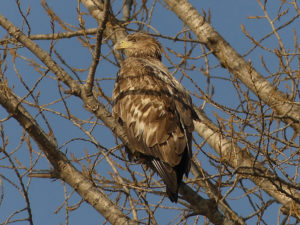
White-tailed Eagle 

Tundra Bean Goose 
Daurian Redstart 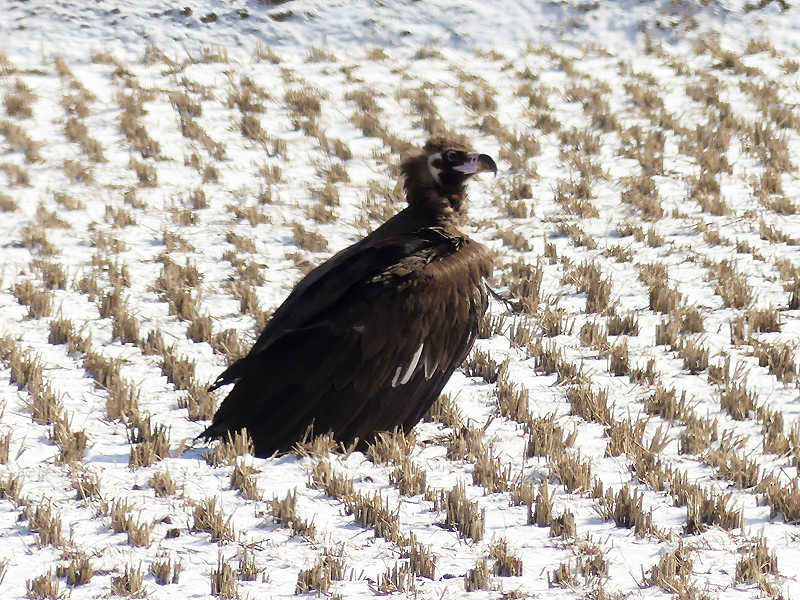
Cinereous Vulture 


Brown-eared Bulbul 
Bullfinch 
Grey-capped Greenfinch 
Meadow Bunting 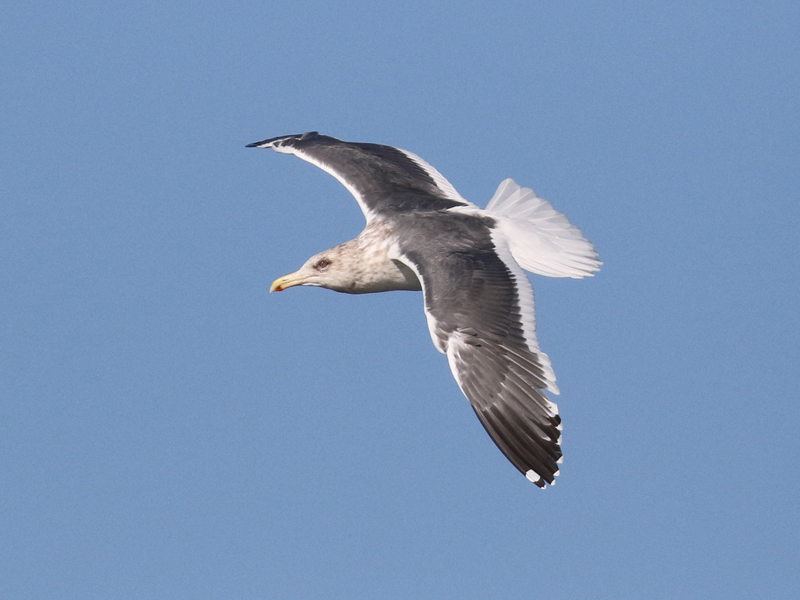
Slaty-backed Gull
All above photographs copyright Nick Upton/Calidris Birding Tours.
Tour Details
Tour Cost: £3975 per person
Single supplement: Not applicable. Twin rooms are unavailable so all members of the group get their own room. Couples can share a room as all rooms have large double beds; a small discount is available to couples in this instance. Please inquire for details.
Included in the tour cost; All transport including airport transfers, road tolls, entry fees, accommodation including on the night preceding the tour and on the last day of the tour, all meals, water, boat trip, services of English-speaking birding guide, translator and Calidris Birding Tours guide.
Not included in the tour cost; International flights, travel insurance, visa (most nationalities don’t need a visa), alcoholic and soft drinks, tips, laundry, hotel mini bar, phone calls and any other items of a personal nature. There are no camera fees in effect in South Korea but if any should be imposed by the government at short notice these will be at your cost.
Accommodation: All accommodation is convenient for accessing the bird watching locations and for making travel as simple and trouble-free as possible. Most accommodation is in very comfortable motels with private bathroom and toilet, hot shower, underfloor heating, hot drinking water, coffee/tea and TV. Good Wifi connections are available everywhere. At Daejin accommodation is at a very comfortable hotel with a very hospitable owner and all the above facilities in the rooms.
Physical effort: This is a very easy tour. We will do most of our birding/photography by taking short walks on easy terrain and rarely going very far from the vehicles. There could be a few areas complicated by a covering of snow or ice but this South Korea winter bird photography tour is suitable for all levels of fitness.
Weather: Expect cold weather at all times. Generally it is bright and dry but there can be snowfalls at any time. Most day time temperatures will be between -5C and +10C but at certain locations it can be as cold as -20C. South Korea is very well set up to deal with these temperatures with hot drinks widely available, efficient heating in all buildings and effective heaters in vehicles.
Food: Generally breakfasts will consist of various bread products along with hot coffee. At our hotel on the north east coast fried eggs, toast and cheese is available. Lunches are either light picnic lunches or hot, traditional Korean dishes. Evening meals are always traditional Korean cuisine, eaten in warm restaurants. Korean food is usually meat or fish based and varies between rice, noodle or stew/soup dishes. Vegetarian food is not widely eaten in Korea but our local guide is a vegetarian so that this requirement can be catered for. Please inform us of any special eating requirements, including any food allergies, you may have in advance.
Tour Leaders
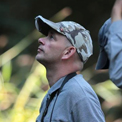
Nick Upton
Nick Upton has been birding since the age of seven and leading birding tours full-time since 2007. After travelling extensively in Asia he settled in Thailand in 1997, teaching English and science while establishing thaibirding.com. With a BSc (Hons) Wildlife & Countryside Conservation he is well placed to understand the ecology and conservation issues that affect birds as well as being adept at finding them.
Nick is co-founder/director of Calidris Birding Tours.
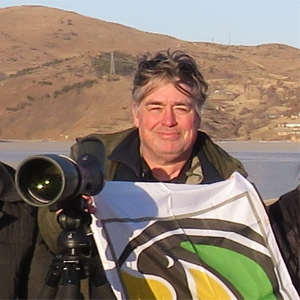
Dr Nial Moores
Nial Moores is the pre-eminent birder and ornithologist in the Republic of Korea. Having been birding in East Asia since 1990 and settled in South Korea since 1998 he is a rare combination of an excellent birder with an unparalleled knowledge of bird ecology. With a PhD in Avian Conservation in the Yellow Sea, Nial is not only an asset as a guide but a font of knowledge while birding.
Nial is the co-founder of Birds Korea.
While every effort will be made to adhere to the advertised itinerary of this South Korea winter bird photography tour, we reserve the right to make changes in the case of unforeseen circumstances that are beyond our control. These include problems with accessibility, national park closures, unseasonal weather events or any other reason that may demand an itinerary change. Given the nature of this tour to gain the best photographic opportunities it is highly likely that the advertised itinerary will change slightly to take advantage of last-minute local knowledge.
Recommended Field Guide
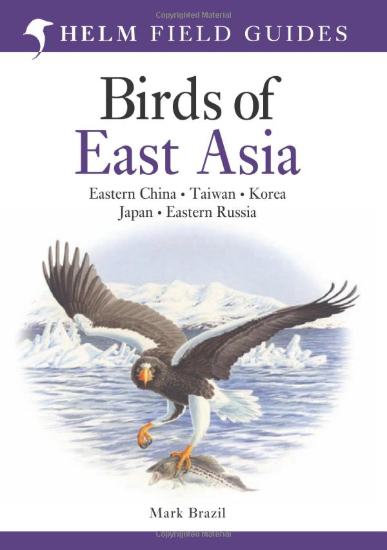
Birds of East Asia
There is no English-language field guide specifically published for the Korean peninsula so a regional guide is the next best thing. Birds of East Asia contains all of the species we are likely to see on this South Korea winter bird photography tour. We recommend that all birders joining us on this unique trip obtain a copy of this field guide well in advance of the tour commencing to become familiar with the species we can potentially find and photograph.
The checklist that Calidris Birding Tours will issue for this trip will use IOC taxonomy with reference to the taxonomy used within this field guide so that it is relevant to both.
Read our full review of the book here – Birds of East Asia.
Related Blog Posts
- Winter Woodpeckers of Korea – posted by Nick Upton 09/05/19
- Becoming a Gull-Watcher in Winter – posted by Nick Upton 23/01/19
- Winter Wildfowl – posted by Nick Upton 18/01/19
- East Coast Gulls – posted by Nick Upton 30/01/17
- Cranes in the Citizen Controlled Zone – posted by Nick Upton 22/01/17
- National Arboretum – posted by Nick Upton 21/01/17
Terms and conditions: Please read full Calidris Birding Tours terms and conditions which apply to the South Korea Winter Bird Photography Tour.



